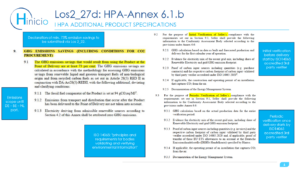Data-driven, carbon intensity-based certification
By Geofrey Njovu on November 26, 2023
The second day of the 2023 annual conference concluded with a panel focused on the need for ammonia certification methods to be centred around high-quality data and not colour labels. Moderated by Intercontinental Energy co-founder Alicia Eastman, the discussion featured Shigeru Muraki from the Clean Fuel Ammonia Association, Wouter Vanhoudt from Hinicio, Linda Dempsey from CF Industries and Conor Fürstenberg Stott from Fürstenberg Maritime Advisory.
While the world appears to be steadily moving away from colour-coded categories for hydrogen and ammonia, there is still considerable debate around what system might replace these labels. The AEA’s certification system is built around the principle that markets can best be enabled when high quality data is collected and communicated, rather than obscured behind a colour label. For this discussion, we invited panelists to explore the approaches being taken by different global bodies, jurisdictions, and industry sectors in pursuit of data-driven certification.
The IMO, G7 and G20: data-driven certification on the agenda

Click to expand. Policy development timeline as the maritime industry plans its decarbonisation roadmap. From Conor Fürstenberg Stott, Certification for Data not Labels: Maritime perspectives (Nov 2023).
For global shipping, the expected timeline of IMO policies set to come into force will drive the industry towards decarbonisation. These IMO policies are data-driven, with negotiations currently taking place around what data does and does not get included, and where default values are set.
The panel noted that data-driven certification is also on the agenda at other key international organisations.

Click to expand. Data-driven certification initiatives launched at the G7 meeting in April 2023. From Shigeru Muraki, Pragmatic Approaches for Clean Fuel Ammonia (Nov 2023).
At the G7 summit in April this year, leaders agreed to cooperate on developing international certification standards, including a mutual recognition mechanism. The G20 followed this up in September by setting up a working group to establish a common methodology for calculating carbon intensity across different jurisdictions. Work continues, and the latest update from COP28 (the Declaration of Intent on Mutual Recognition) indicates there is substantial appetite for international cooperation on data-driven certification.
The USA: clarity still required

Click to expand. Carbon intensity calculation methodology and tax credit entitlement for clean hydrogen production in the US. From Linda Dempsey, Certification for Data, not Labels (Nov 2023).
In the USA, it is already established that IRA tax credits will be based on carbon intensity, rather than colour labels. Subsidy brackets based on carbon intensity thresholds have already been set, but US producers are still waiting for clarity on issues like additionality & temporal matching for renewable inputs, and rules around upstream methane leakage. Preliminary Treasury guidance was issued in January 2024, as part of an industry consultation period.
The EU: a data-centric approach in practice

Click to expand. Data-based product specifications for clean hydrogen in the EU. From Wouter Vanhoudt, Hydrogen Purchase Agreements: Data requirements from case study H2Global (Nov 2023).
As an example of what data-centric certification might look like in practice, the panel explored progress in the EU. RFNBO rules adopted earlier this year state that low-carbon hydrogen fuel (and its derivatives) will need to reduce emissions by at least 70% over its full lifecycle compared to the fuel replaced. Initial and periodic verification of the “seller’s compliance” must be completed by a third party auditor, and a number of additional sustainability requirements need to be met on top of emissions intensity for successful verification.
Convergence around what data needs to be included
Via an interactive poll, more than half the audience responded that they expect some degree of convergence amongst global certification standards by 2035. As to what will drive this convergence, the panelists agreed that success will be achieved by certification schemes that best account for customer requirements – and particularly what data customers want included.
The panel also agreed that ammonia customers will likely ask for accurate, traceable, trustworthy data to prove the low-carbon claims of the producer. This may well extend beyond carbon intensity to other sustainability considerations, such as water consumption or labor conditions. Even if modular certification is likely to be preferred as a way for ammonia to enter the most stringent markets (like the EU), forward progress for certification will be entirely data-driven.